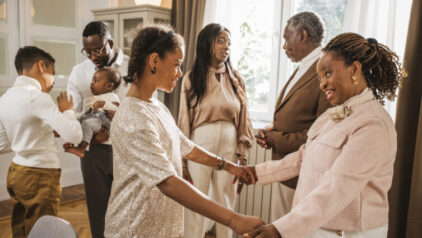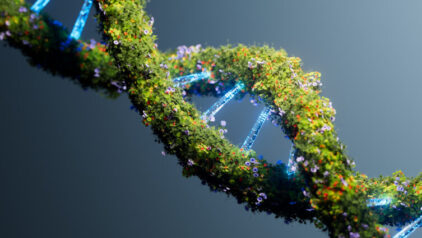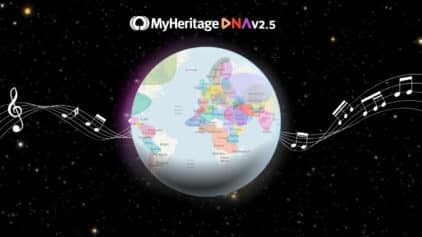Makes things easier to understand, but a question can the son, which ended up with Zero Scottish have children with Scottish ancestry?


It comes as no surprise that when two siblings are take a DNA test, their results will usually be similar. What is surprising to many people, though, is how two siblings (not twins) with exactly the same parents and ancestors can receive different ethnicity results. After all, identical ancestors should give identical ethnicity estimates, right?
Well, it’s not that simple. In fact, it’s rather common for siblings to have different ethnicity estimates. There are several factors that can affect genealogical ethnicity. We’ll take a look at those factors here.
Basic Human Genetics
To understand genealogical DNA tests, you must understand a little bit about human genetics. We’re not going to get too heavily into the science of genetics, but there are some basics you need to know.
Chromosomes
DNA is divided into large chunks called chromosomes. Humans have 23 pairs of chromosomes.
Most genealogical DNA testing, such as that done at MyHeritage DNA, is autosomal testing. That means it looks at the first 22 pairs of chromosomes, the autosomes. The 23rd pair of chromosomes is the sex chromosome, which determines if you are born male or female.
Other DNA tests (Y-DNA, mtDNA) look at other parts of the DNA. But autosomal DNA testing is used to determine ethnicity estimates.
Genes
Each chromosome is divided into smaller chunks called genes. Each chromosome has hundreds or even thousands of genes.
These genes tell our bodies how to grow and operate. Among many other things, they are responsible for our hair color, eye color, complexion, tendency to be thin or heavy, the shape of our faces, even if we prefer salty or sweet foods.
It is also these genes that help determine your ethnic heritage. Certain variations in genes are common in certain areas but rare in others. Some are only found in specific ethnic groups. Ethnicity estimates rely on these genes as indicators of where your ancestors lived.
Genetic Jumble
Your DNA says a lot about who your ancestors are and where they lived. However, because of the way genes are passed from parents to children, things get a little jumbled.
We each have 22 pairs of autosomal chromosomes, but those pairs are not identical. Our reproductive cells take bits and pieces from each of those chromosomes to make up a new, unique configuration. The new DNA strand is very similar to the old one, but not identical.
That’s why siblings, who share most of the same genes, tend to look like each other. But unless they are identical twins, there are always some differences in their genetic code.
And that means there may be some differences in their ethnicity estimate, too.
Let’s look at an example of how that might happen.
DNA Inheritance Example

Every person has 22 dots which are used to represent the autosomes or first 22 pairs of chromosomes. Children receive half of their dots from each of their parents.
In this example, we’re starting with some basic ethnicity combinations. This simple model demonstrates just how different ethnicity estimates can be for siblings.
At first glance, you might think that if your paternal grandfather is 50% Irish and 50% Scottish, and your paternal grandmother is 100% Italian, that your father would be 25% Irish, 25% Scottish, and 50% Italian, but that’s not necessarily true.
In the illustration, the paternal grandmother can only pass on Italian genes, so half the father’s genes are Italian (50%). But the paternal grandfather can pass on either Irish or Scottish genes, and it won’t always be exactly half of each. In this case, more Irish genes got passed on than Scottish ones.
Look at the maternal side, and you will see the same thing. More Irish genes were passed than Italian ones.
With each generation that passes, there is another chance for a random number of genes from each ethnicity to be handed down. Even after only two generations, the two siblings have some major differences at the genetic level.
On average, siblings share about 50% of their DNA with one another, but some share a little more and some share a little less.
So while we all get 50% of our DNA from each of our parents, the segments we end up with are completely random.
Ethnicity Estimates
So, if everyone’s DNA is unique (except for identical twins, triplets, etc.), then how do we ever manage to determine what someone’s ethnicity is?
The answer is single-nucleotide polymorphisms (SNPs). In simple terms, these are really small pieces of DNA that are just a little bit different depending on your ancestry.
DNA mutates over time. Usually, DNA makes exact copies of itself, but sometimes there is a tiny mistake, such as changing a single letter on a page of text. If that mutation gets passed down, over time it will appear in more and more descendants.
People did not move around as much in the past compared to today, and they usually married within their own ethnic or religious group, so these SNPs accumulated over time. In some cases, they are entirely unique. If your DNA contains an SNP that only appears in Egyptians, then odds are that you have an Egyptian ancestor.
The testing done through MyHeritage DNA examines millions of these tiny bits of genetic code and compares them to sample databases to create your ethnicity estimate. The more SNPs you have that match a certain ethnic group, the greater your ethnicity estimate will be for that group.
But remember that DNA becomes mixed with each generation. If you inherit many SNPs associated with a particular group, you will receive a high ethnicity estimate for that group. If your sibling inherited fewer SNPs for that group, he or she will receive a lower estimate.
Also, each company that tests DNA uses a different method for calculating ethnicity. That means if you test with more than one company, even though your DNA doesn’t change, your ethnicity estimate results might.
Finding Relatives
One interesting consequence of this is that you and your siblings might also show different relative matches.
Once your DNA is tested with MyHeritage DNA, your results are matched against everyone else in the database to see if any of them are relatives. That gives you the opportunity to reach out to distant living relatives and share research and family stories.
Because your DNA is not an exact match to that of your siblings, the relatives you are matched with won’t be exactly the same, either. In the example above, the son is more likely to find matches with strong Irish and Italian genes, while the daughter will find more German and Scottish relatives.
This mostly affects more distant relatives. Despite their differences, both the son and daughter are almost certain to find the same set of close relatives (first to third cousins).
Conclusion
Can you and your sibling have different ethnicity estimates despite having the same ancestors?
Absolutely. In fact, unless you are identical twins, it would be unusual if you didn’t.
You and your siblings do not share the exact same DNA. Genealogical DNA testing determines ethnicity based on your unique DNA.
Quite often, these differences can be small, but not always. This doesn’t mean the tests are wrong or inaccurate. It just means it is even more important that as many relatives as possible get tested, to receive the most information possible in tracking down your family tree.
What have you discovered in your MyHeritage DNA results?
This is a guest post by Marc McDermott, the creator of Genealogy Explained. He shares his passion for genealogy with fellow hobbyists and aims to break down complicated topics related to family history and DNA. Marc lives in New Jersey with his wife Leigh. When not working on Genealogy Explained, you’ll find him knee-deep in microfilm at the state archives in Trenton, or doing research at his local family history center.











joan
August 25, 2018
one thing to add to an explantion is geopolitics and ethnicity. when we say “french heritage,” we think of that in terms of today’s static boundaries. countries are quite arbitrary in the scope of things.